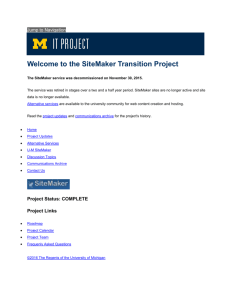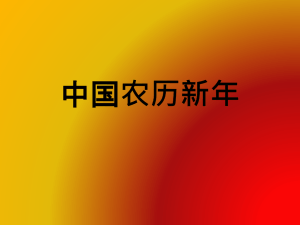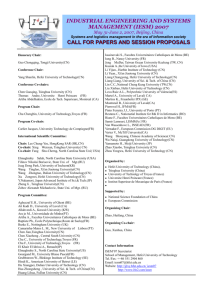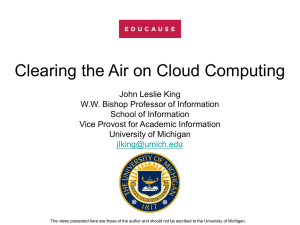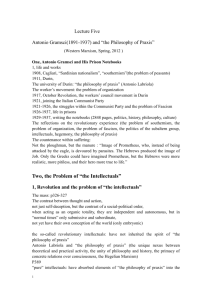Chinese Education - East Asia Institute | The University of Oklahoma
advertisement
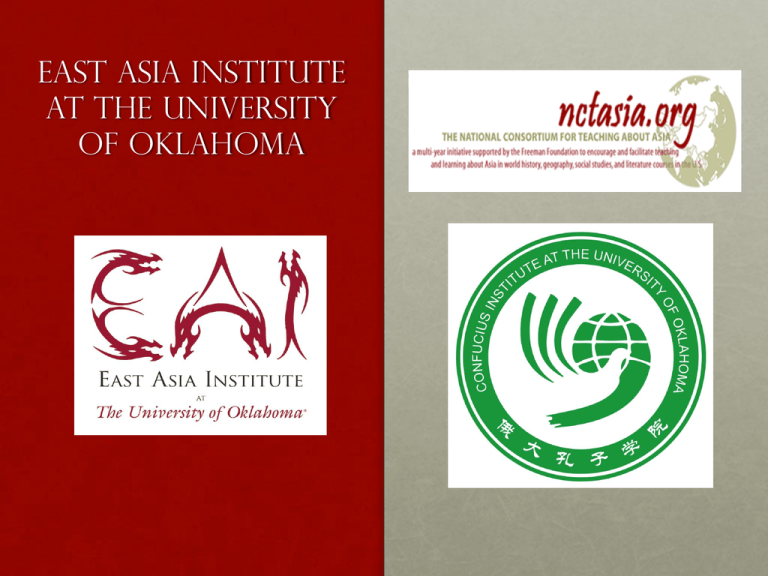
East Asia Institute at the University of Oklahoma Brief History of Chinese Education Brief History Education has played an important role in China’s long cultural tradition. Many scholars believe that the history of China can be traced back to the Xia Dynasty in 1500 B.C. Who was educated at this time? During the imperial period only the educated intellectuals…. Classification of Education Official School 1. Whole sets of education systems. 2. It’s goal was to… Private Schools 1. Local official schools 2. Opposite of the official education system. 3. Central official schoolInstitutions of highest learning. 3. Initiated by Confucius • 156 BC -1911 AD 156 BC- 1911 AD 4. Private schools were in the urban and rural areas Confucius • Confucianism’s impact on China. • Han Dynasty (202 BC- 220 BC) a public education system established. • Common man could also use this path. • Become a Gentleman or Chun Tzu was the goal. Confucius Quotes • “Education breeds confidence. Confidence breeds hope. Hope breeds peace.” -Confucius “You cannot open a book without learning something.” -Confucius • “I hear and I forget. I see and I remember. I do and I understand.” -Confucius • “If I am walking with two other men, each of them will serve as my teacher. I will pick out the good points of the one and imitate them, and the bad points of the other and correct them in myself.” -Confucius Confucius says… Cult figure 1. Bicycle can’t stand on its own because it is two tired. 2. Man who run in front of car get tired. 3. Man who run in back of car get exhausted. 4. Man who lives in glass house must get changed in basement 5. Man who sits on tack gets point. 6. Man with one chopstick go hungry. Civil Service Exams Ke Ju 科举 1. Select government officials. ( 581-618 AD) 2. Education system 3. Talent 4. Different types of exams: County level, provincial level, palace level. Mao ZeDong 1893-1976 • The intellectuals will accomplish nothing if they fail to integrate themselves with the workers and peasants. In the final analysis, the dividing line between revolutionary intellectuals and non-revolutionary or counterrevolutionary intellectuals is whether or not they are willing to integrate themselves with the workers and peasants and actually do so. - "The May 4th Movement", May 1939 The educational doctrine of Mao Zedong • Marxist, protagonist, strategist, and theoretician. • Important education to the proletariat. • Socialized form of socialist education • Mass education 3 Main Building Blocks • 1. Personal teaching experience • 2. Marxism • 3. Culture heritage of China Current Education System in China 1. Synopsis of public schools in the U.S. and China. 2. Comparisons of teachers and teaching strategies. 3. Comparisons of test taking and tracking. 4. Parental involvement 5. Math and reading scores 6. Strengths and Weaknesses Tiger Mother Tiger mom Tiger mom Stereotypes that can ring true Comparisons (There are exceptions) China 中国 1. Grades- 1-9 (6 primary and 3 secondary) U.S. 美国 1. Grades 1-12 2. 5 days a week (6 primary, 2/3 middle school, and 3-4 high school) 3. Two semesters 2. 5 days a week 4. Classroom size 40-70 avg. 3. 2 semesters NOTE: Grades 10-12 are considered higher education and are not free. 4. Classroom size-20-30 avg. 5. 60-70% education focused 6. Added element of social relationships. 90% education focused Social relationships also but focus is different. Primary Curriculum China 中国 U.S. 美国 1. Chinese, math, P.E., music, art, science, and society. 1. Liberal arts focused-well rounded 2. Importance of teamwork 2. 3. The “Big 2” English, math, science, social studies, music, art, gym, and other electives. 4. Most time allocated to these two subjects. 3. Extra curricular activities: sports, band, clubs, volunteer work, cheerleading, etc. NOTE: Grades 10-12 are considered higher education and are not free. Secondary Education China中国 • 1. Competition • 2. Stress U.S.美国 1. Limited competition 2. Less stress 3. Multiple children 4. Lower expectations..allow me to explain 5. More options. • 3. Only child • 4. Expectations • 5. Options limited • Yearly test to advance to the next grade. • Only 1/3 of the students who take the Gao Kao(College Entrance Exams) are admitted. Entrance Examinations China 1. End of every year. 2. National College Entrance Exam (GaoKao-高考) 3. Purpose-higher education and leadership. 4. Recruits top students 5. Admitted in 3 different quotas: 6. You can retake, but must repeat your senior year. U.S. 1. Every year and throughout the year. 2. SAT and ACT-Junior and Senior years-no limit 3. Purpose-higher education 4. More options(Best universities in the world are in the U.S.) Other points China • 1. 25% drop out rate in China. • Why they drop out: • http://fsi.stanford.edu/sites /default/files/Exploring_Dr opout_Rates_and_Causes_o f_Dropout_in___UpperSecondary_Vocational_Scho ols_in_China.pdf U.S. • 1. Dropout rate highest among all of the developed nations. • 2. Unequal opportunities according to socioeconomics, poor facilities. • 3. State and local government provide funding. Feds-8.5 %. Daily Schedule • China • U.S. Teachers in China China • Becoming a teacher 1. Two additional training in a professional institution. 2. Primary school teachers need to be graduates of secondary schools 3. Pay is low. 4. Limited classroom hours. Plan period for each hour taught. 5. Teachers rotate classes 6. RESPECT!!!! U.S. • Becoming a teacher 1. Bachelor’s degree 2. PASS OPTE, SAT, and OGET tests 3. Pay is so high I don’t know why I am still not teaching. 4. 5-7 classes a day with one plan. 5. Teachers have their own classroom. 6. Conditional respect. Teaching strategies China U.S. • Standard curriculum from the Ministry of Education • Oklahoma Academic Standards ((State) 1. Embarrassment 1. Encouragement 2. One on one 2. See you tomorrow 3. Competitive environment. Students are numbered… 3. Only the top and lowest are known. 4. Teachers and students work together 4. Us against them. 5. Stop and help the student 5. So long, farewell Implications for success China 1. Believe every student has the ability. 2. Expect more from their child 3. Parents play active role 4. Parents will go to school and take notes….! 5. Their society supports education. U.S. 1. We separate 2. “That is not their talent” attitude. 3. Parents play passive role 4. I have to work 5. We do not make education a priority. Strengths China 1. More respect 2. No taxes on salary 3. U.S. 1. U.S. universities and colleges are the best in the world. Own National HolidayTeacher’s Day Sept. 10th 2. More latitude with curriculum development. 4. Hard work ethic, so students succeed 3. Students learn to ask questions. 5. Do not segregate high achieving students 4. More freedom to engage in extracurricular activities. Weaknesses China U.S. 1. High Stakes 1. Low stakes 2. Study, study, study 2. Study, play, play, study, play 3. Little time to socialize outside of class. 3. Plenty of time for kids to socialize. 4. Limited extracurricular activities. 4. Numerous extracurricular activities. 5. Method of learning involves memorizing. 5. Methods of learning require more interaction (back and forth). Chinese students American Students Teachers Teacher at heart Where do we need to focus? Hefei No. 2 HS Why No. 2? Hefei No. 2 HS Hefei No. 2 HS Hefei No. 2 HS Hefei No. 2 HS Chinese Summer Bridge Chinese Summer BRidge Edison HS Exchange Program Conclusion If schools in the U.S. public school system were to incorporate the positive aspects that make the Chinese school system so successful, schools in the U.S. would in turn be more successful. It is my personal hope that educators and school administrators will compare schools in the U.S. to the successful schools in other countries, including China. DISCUSS recommended changes!!!!!! References • Mao Zedong • Education System in China • www.ibe.unesco.org/publicati ons/ThinkersPdf/maoe.pdf • http://www.classbase.com/C ountries/china/EducationSystem • Modern China • http://sitemaker.umich.edu/ vanschaack.356/synopsis_of_ public_schools_in_china • Modern China • http://www.tc.columbia.edu/ faculty/tsang/Files/7.pdf • Grading System • http://www.classbase.com/C ountries/china/GradingSystem References • [3] Yuen-Yee, G. C., Watkins, D. (1994). Classroom environment and approaches to learning: an investigation of the actual and preferred perceptions of hong kong secondary students. Instructional science, 22(3), 233-246. • [4] Afflerbach, P. (2005). National reading conference policy brief: high stakes testing and reading assessment. Journal of Literacy Research, 37(2), 151162. • http://sitemaker.umich.edu/ vanschaack.356/reference_list • http://sitemaker.umich.edu/ vanschaack.356/reference_list References • [9] Fuligni, A. J., Stevenson, H. W. (1995). Time use and mathematics achievement among american, chinese, and japanese high school students. Child Development, 66(3), 830-842. • [9] Fuligni, A. J., Stevenson, H. W. (1995). Time use and mathematics achievement among american, chinese, and japanese high school students. Child Development, 66(3), 830-842. • [10] Woessmann, L. (2006). Why students in some countries do better. Retrieved december 9, 2006, from http://www.hoover.org/publi cations/ednext/3389816.html • http://sitemaker.umich.edu/ vanschaack.356/reference_list • http://sitemaker.umich.edu/ vanschaack.356/reference_list
